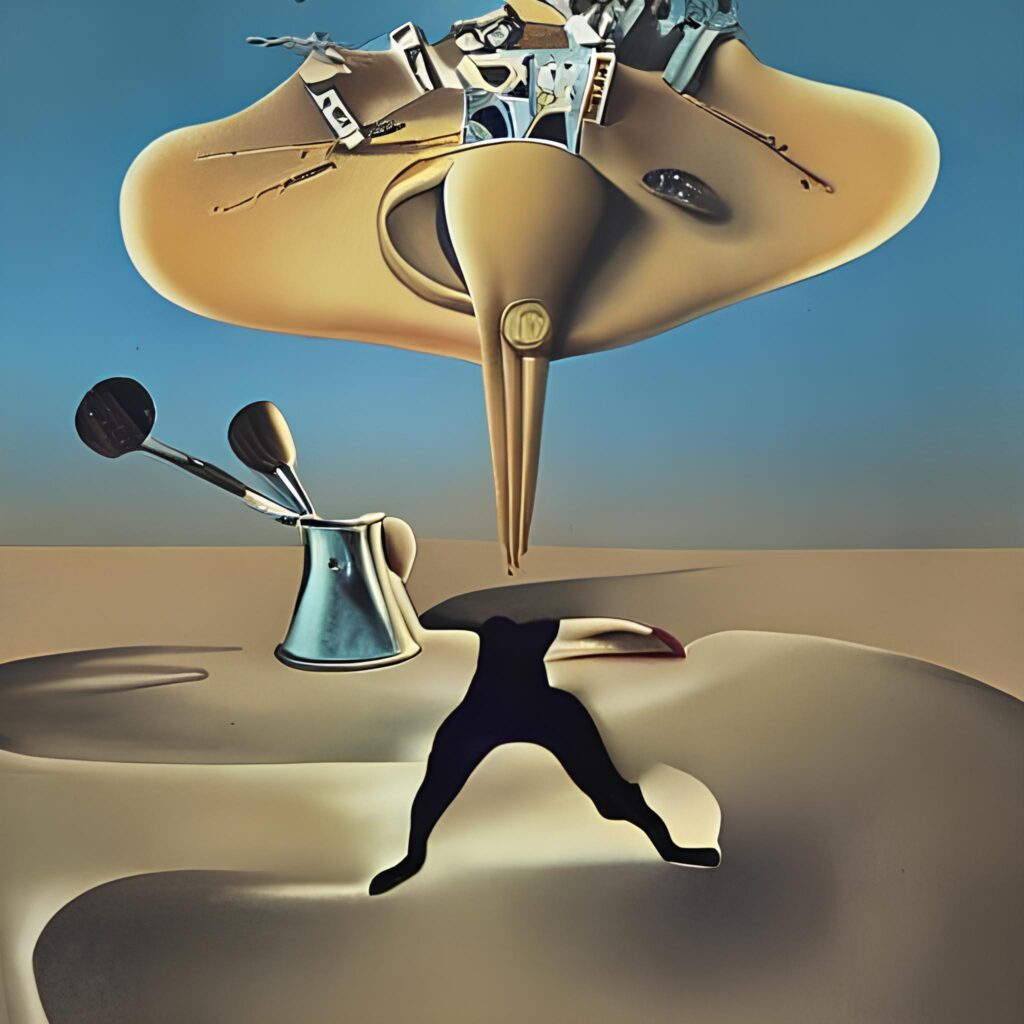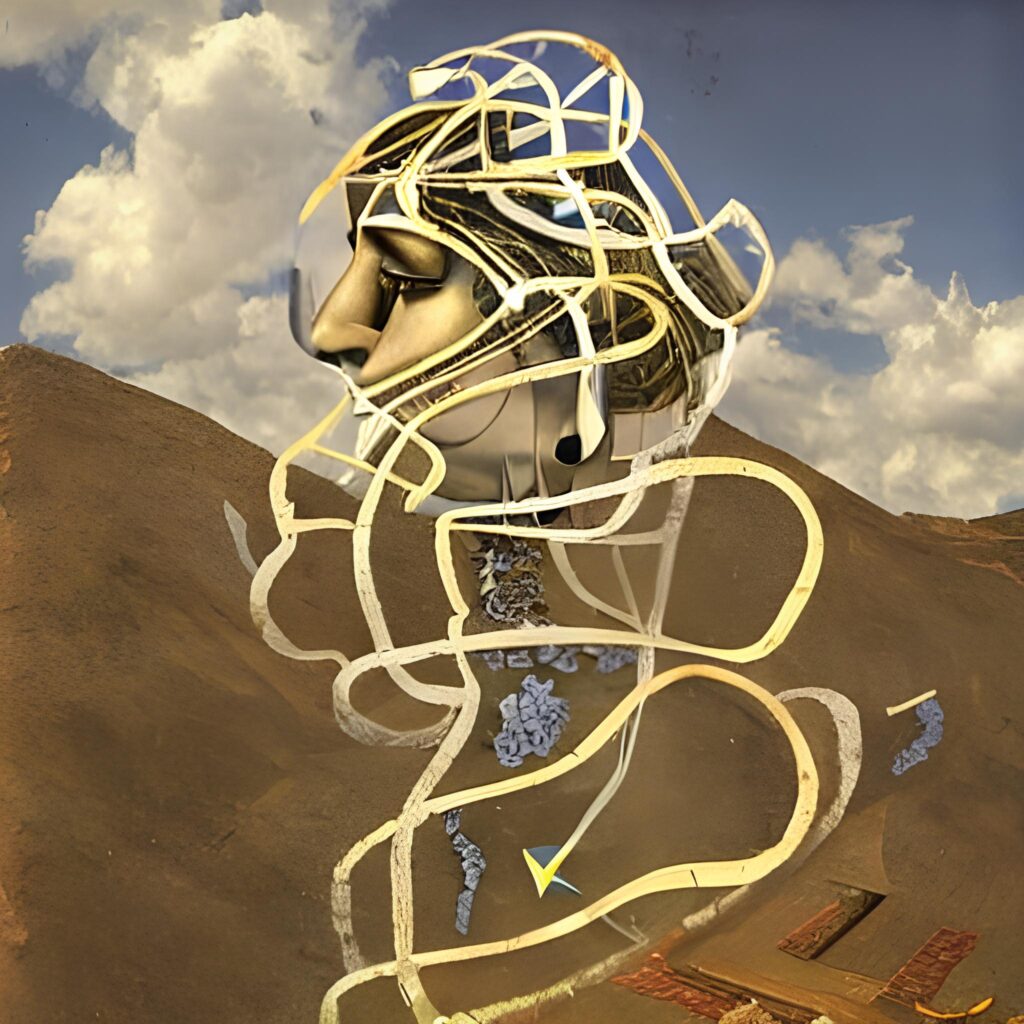Generative AI has taken the world by storm, disrupting innumerable industries. It can generate text, images, music, video, code, and the list goes on and on, with incredible results. In 1950, Alan Turing famously proposed a test for artificial intelligence: if you could speak to a computer and believe it to be human, then the computer could be labeled as artificially intelligent. ChatGPT, by OpenAI, achieves this threshold (until, of course, it tells the user that it is a computer as per its ethical guidelines).
We are approaching a new age of digital technologies that promises to blur the lines of what we define as ‘intelligent’, ‘conscious’, and ‘dangerous’. The advent of the integrated circuit (1960s) revolutionized businesses and companies with rudimentary computational efficiencies. The 1980s saw an increase of accessibility to the broader public with the personal computer allowing for an evolution of coding and other digital media, education, and productivity tools. Tim Berners-Lee founded the World Wide Web in the 1990s, which allowed every computer in the world to communicate with each other. The impact of the World Wide Web cannot be overstated as it has revolutionized nearly every part of our modern Western society and economy. It was such a disrupter that entire industries were born with new and experimental financial models, inevitably resulting in the dot com bubble and subsequent burst. In the 2000s, smartphones instigated the mobile revolution further increasing access to the powers of the personal computer along with the World Wide Web. Mobile devices allowed for wireless connectivity enabling developing nations access to the digital age (since wireless infrastructure is far more affordable than wired ones).

QR CODE OR ART?
The Disappearing Boundary of:
- made for humans vs. made for machines
- human-readable vs. machine-readable
- function vs. art
- human generated vs. AI generated.
Made with Stable Diffusion, IMG -> IMG with prompts of a QR code for https://greyandivy.ca and “pcb motherboard of an old computer, circuit cyber future, very detailed, sharp lines, circuit ways, green and gold and black, pathways, plan view, matte photograph, flat”
Grey & Ivy is inextricably linked to the worlds of design and education, among some of the most threatened sectors. With the rise of Google and other search engines, the value placed on memorizing information has diminished; so, what will happen to the value of ‘creativity’ and ‘knowledge’ with the proliferation of Generative AI tools? It only takes one misspelled and grammatically incorrect prompt in ChatGPT 3.5: “why us knowlege impotant?” to result in an over 300-word ‘thought’ that lists reasoning of personal growth, empowerment, critical thinking, professional success, social interaction, and personal fulfillment. Maybe the value that knowledge brings to humans is accentuated with Generative AI — after all, together, human and machine, could surely increase the effectiveness of this value of knowledge. It took less than ten years for many people to view their mobile device as an extension of their person, exhibiting anxiety without it, so at what point does Generative AI become an extension of ‘being human’? Will Generative AI allow us to express our thoughts and feelings better than we can? Will most of our experiences be mediated by a Generative AI?
Throughout the shifts in technologies there has been a clear shift in power from the few to the many — access is the most discriminatory part of education. Publishing to the World Wide Web, in specific, began as static pages developed by businesses or coding experts, to multi-billion-dollar website platforms where anybody can publish anything. Content creation has been decentralized while platform ownership still remains in the power of ‘big-tech’. Blockchain technology has been touted as the answer to distribute power, especially financial power, away from centralized entities, but often falls short in countering government control over currency. There have indeed been some breakthroughs and serious developments such as zero-fee money transfers, privacy, security, and smart contracts yet it often looks from the outside as simple zero-sum games. ChatGPT, a generative AI large language model, is a computer script that generates content — that is, creates new content as opposed to referencing already made content — was made accessible to the public in late 2022. This catapulted the technology from behind closed doors into the public, ushering in a wave of innovation, debate, accessibility, destabilization, and fear — fear from job loss to a somewhat plausible dystopian future not dissimilar to The Matrix, and everything in between. Anyone with an internet-connected device can utilize these incredibly powerful Generative AI tools.

Stable Diffusion Image at each sampling step. Andrew. (2023). How does Stable Diffusion work? Stable Diffusion Art.
https://stable-diffusion-art.com/how-stable-diffusion-work/
Coming from a background of education and at the risk of anthropomorphizing, the development of Generative AI mirrors many traits to what we know as thinking, remembering, and learning. It is likely that these are artifacts, approaches, or developmental phases left behind by the human programmers as opposed to intrinsic to this technology, but nonetheless, they are prevalent. Large language models, such as ChatGPT, are known to state false information and/or plainly make stuff up. It is like it does not know the right answer or does not know how to assess if the answer is correct, and based on its understanding, it provides its answer with the utmost of confidence… Sounds a lot like humans attempting to retrieve a memory or knowledge. Psychologists have found that our personal pasts, our memories, change every time we retrieve them; it is as if each time we recall a piece of information, we relive it, and it is therefore susceptible to change; it is as if each time we recall a piece of information, we are generating new content based upon our training data set.
The incorrect creations or falsehoods by AI have been deemed ‘hallucinations’ and occur in all types from large language models to image generations and beyond. (Count the number of fingers and toes on the next AI image of a person.) What any AI cannot take away from us humans is the process — the feelings, realizations, epiphanies, ‘a-has’, flow state, and/or embodied thinking that humans get when engaging in just about anything. An AI will not be able to create human beauty, idea spillover, or serendipitous errors. It has been over 20 years that an AI can consistently defeat the human World Chess Champion, yet we do not watch two AIs play chess. Creativity is not efficiency but a process worth pursuing, and there are a multitude of clichés that prove this is not a new thought amidst this new world of Generative AI.
We, Grey & Ivy, continue to explore how to involve Generative AI in our process. This can be so challenging because Generative AI can come across as having all the answers even though it does not. ChatGPT, for example, presents as a professional in any subject matter you ask, so it takes incredible critical thinking and confidence to second guess it. We encourage learners and designers to play with half-formed ideas through image- as well as text-based Generative AI tools with the emphasis of idea and thought formation instead of developing a direct solution; however, this is a very hard practice as the allure of an instant answer and the feeling of inferiority to the Generative AI emerges. The need to experiment with these technologies is crucial and will undoubtedly lead to inconceivable new workflows and tasks.
Generative AI and more powerful versions are undoubtedly revolutionizing our society, education, work, and so much more we have yet to learn about. We need to learn how to work with these technologies right now and empower our youth to do so, who always have a longing to engage with the tools of their culture. We still have much to learn about the relationship between human and machine from the generation of ‘digital natives’ — and soon we’ll be ushering in a generation of ‘Generative AI natives’.
MAKE ME A DALI ABOUT SPATIAL AGENCY
Created by Stable Diffusion, Model by CompVis and Runway, 2023.



Originally published in Spatial Agency 02 by Grey & Ivy.
